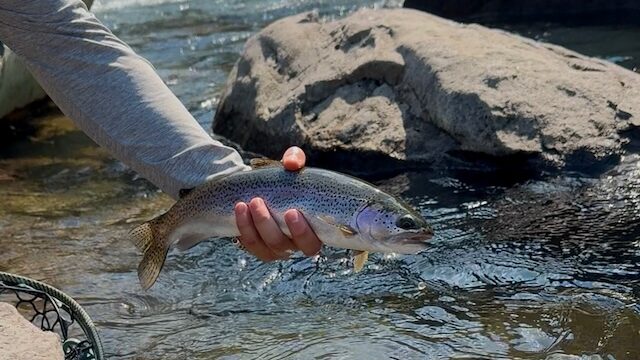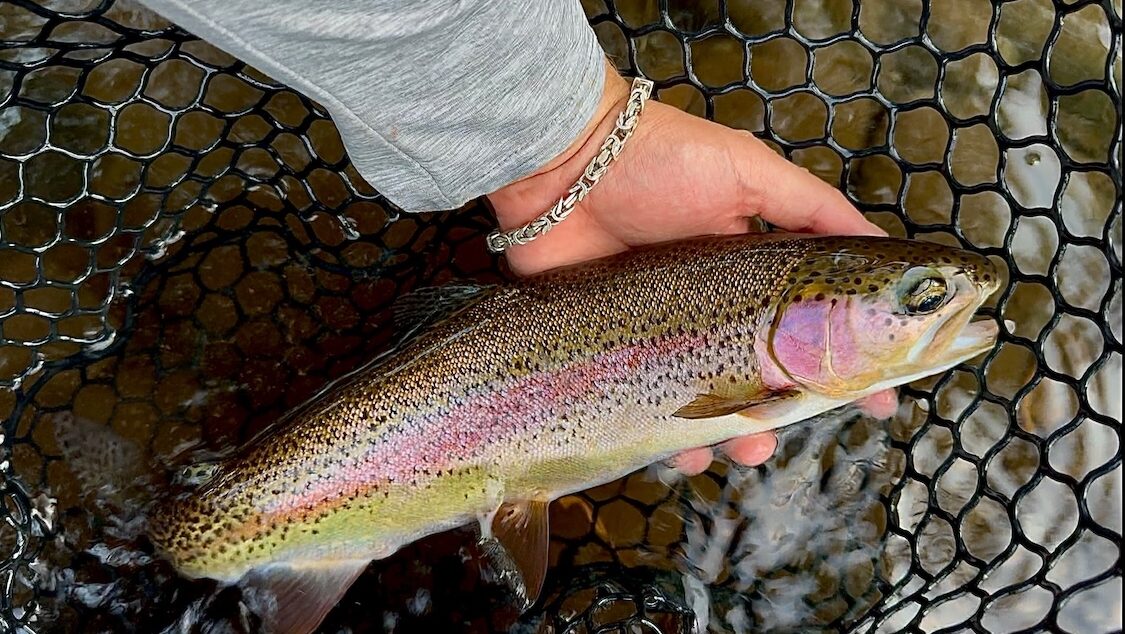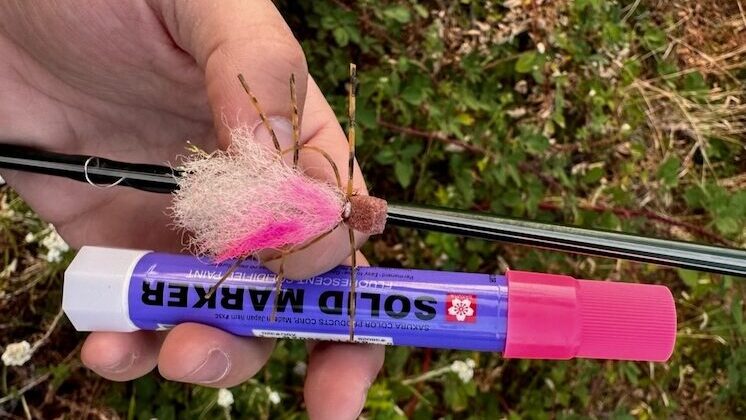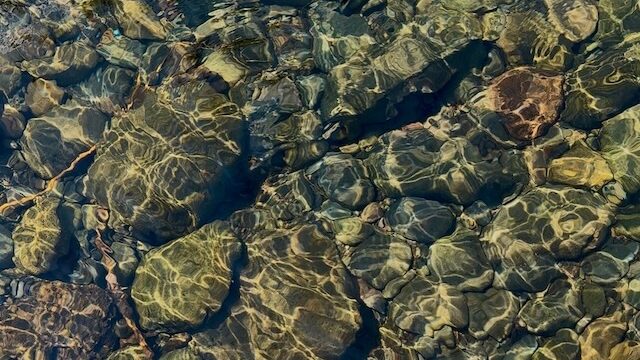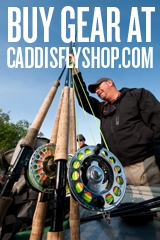We are nearing the end of the dreaded summer period where things are a bit too hot for a trout’s liking. Hot air and water temperatures reduce waters efficacy at holding oxygen, this in turn produces both stressed and lethargic trout. Pair that with a natural lull in aquatic insect hatches, and you’ve likely got a trout’s least favorite time of year. The good news is there is hope on the horizon, and many of you likely felt it the last few days of cooler more Fall like weather. As the days and weeks tick on, our fall hatches begin to ramp up, living conditions improve for trout, rivers become a little bit less crowded, and for many of us we enter our favorite time of year for trout fishing. This last hoorah for summer is great time to do some bushwhacking and get off the beaten path. Many easy to access places have been being hammered all summer, and it pays off to do some walking.
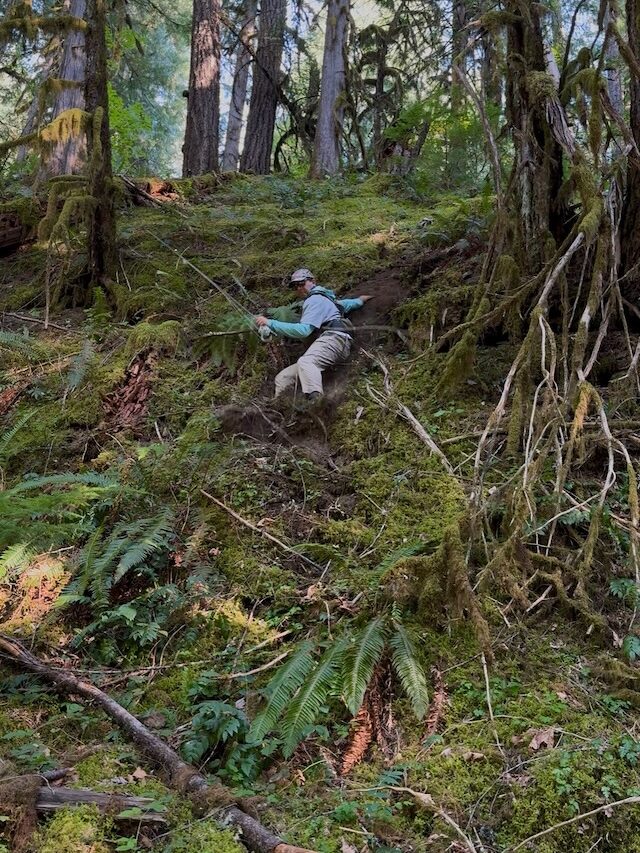
Aquatic insect hatches are sparse, but not for long. Soon our rivers will be popping with Nocturnal (Shortwing) Stones, Baetis species (Blue Winged Olives, BWOs, Olives), Mahogany Duns, a few other assorted small Caddis species, and everyone’s favorite the “Great Autumn Brown Sedge” or October Caddis. Despite the current lack of the insects just listed above, there still are plenty of options for trout to eat; they just appear in less predictable “hatch-windows” as they are the plethora of terrestrial or land based insects. For those who don’t know, these include Grasshoppers, Beetles, Ants, Crickets, and other land based insects that end up in the water. Especially as fall weather moves in and mornings cool off, the terrestrials are slow to wake just like us on a chilly morning. Late morning or early afternoon on a windy day near brushy banks is a great way to fish terrestrials.
The lower to middle portion of our Mckenzie and Middle Fork Wilamette rivers have taken the brunt of the summer heat. These rivers spread out wide and there is less riparian tree cover to provide shade on the river. These areas are also the furthest away from the cold springs which feed our rivers. That being said, working your way upriver and fishing our smaller tributaries this time of year is advantageous. Carrying a thermometer is a good idea this time of year. Many of us run the Digital River Keeper Thermometer from Fishpond. This thermometer can be clipped to your boot lace or onto your net for quick, accurate measurements. It is widely regarded to stop fishing at temps above 68 degrees. I personally start moving for cooler water around 65 or before for the trouts well being, and fishing in warmer water is generally more work with less fish. This time of year, finding appropriate temperatures is always easier closer to our rivers’ headwaters and in their tributaries. Another option for late summer which can be hot is to head to our many high lakes. Especially with things cooling off there are countless hike in lakes that will reward you with hours of dry fly fishing. Fishing our smaller high lakes is enhanced with a small personal float tube, which can be hiked in with on your back or pumped up at the lake.
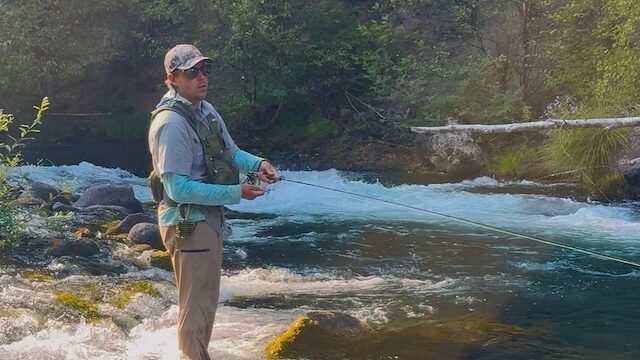
The bulk of our searching this time of year is with a dry dropper setup. It allows you to search the surface with a large, bushy, and buoyant dry and probe the depths with a nymph simultaneously. On especially hot days, the dry fly can be ignored, especially in the middle to rear of a run. In this slower water there is less oxygen and lethargic fish that are less apt to surface. On hot days, look for dry fly eaters in rifles and the heads of runs where there oxygen content is significantly higher than in slower moving water. If dry fly fishing is slow, especially durning the middle of the day, I will do the best with a double nymph rig under an Oros Indicator. When fishing the terrestrials on rivers and streams, guide your attention to prime lies that have natural debris and overgrown brushy banks. On our high lakes it is wise to guide your attention to similar brushy banks or the wood structure in the shallows and fish ants or throw small streamers near the snags. As our terrestrials ramp up most of the action is in the evenings when it is cool, keep your eyes peeled for an additional report on how to approach the several hatches coming up in the coming weeks
This time of year your dry dropper setup can look all sorts of ways. If you’re on the mainstem Mckenzie or Willamette it will likely consist of a large chubby with a heavy nymph below. On small streams it may be a small chubby or hopper with a lighter nymph below. For our high lakes it may look like an ant with an unweighted pheasant tail or Chironomid tagged below. If you are only running nymphs below it is to your advantage to be running fluorocarbon tippet. Mono affords some versatility and you can swap your nymph dropper for an additional small dry such as a mahogany or small caddis. This level of versatility becomes more important in a few weeks. I have been experimenting with the Dropper Rig Fly Box and have been pleased with my ability to quickly change out rigs without retying. Here are some suggestions for large buoyant dries for your rig: Chubby Chernobyl, Craven’s Big Fat Angie, Montana Fly Company Water Walker, Double Stack Chubby Chernobyl Fly, Burkus Bearback Rider Stone, or for smaller creeks a Hi-Vis Micro Chubby Chernobyl. Here are some hot nymphs that we have been running below: Jigged Possie Bugger, Jig Sexy Walt’s Worm, Jigged Duracell Nymph, Jigged Frenchie, Jim Sen’s Improved Jigged 20 Incher, or a Loren’s Stud.
We have been using Scientific Anglers Indicator Markers for a while now. These markers work great for Euro setups marking your leader. This last winter I experimented using them to help keep track of my small Blue Winged Olives and they worked great. I’ve also used these markers to add notches for my streamer fishing too. This summer I’ve experimented with using these markers to mark actual dry flies. Especially this time of year, we fish our flies in turbulent water where there is more oxygen. This makes it hard to track a white winged chubby, especially for my nearsighted eyes. I have been marking Chubbies, Hoppers, and small flies on their wing or post and am pleased with how these markers instantly turn any fly into a hi-vis one.
Dry fly selection is forgiving this time of year as many types of “attractor” style patterns work fantastic to bring a trout to rise. These patterns aren’t direct copies of one insect, but are suggestive of many and have a general buggy look. We are using a lot of terrestrials right now. Buoyant Hoppers that we like include: Henneberry Hopper, Morrish’s Hopper, and Rio’s Blade Runner Hopper. Some smaller terrestrials more fit for a single dry or a small stream dropper setup are: Dry Humper, Hi-Vis Micro Chubby Chernobyl, Stubby Chubby, or a Craven’s Big Fat Angie. Ants and beetles are a great way to search with a single dry, and in my opinion make an even better trailing dry on streams and our high lakes. Here are some shop favorites: Turck’s Power Ant, Missing Link Honey Ant, Mason’s Bant, Ground Beetle, or a Splitzville Beetle. Attractor style patterns that always work great include: Rubber Legged Elk Hair Caddis, Elk Hair Caddis Brown, Carlson’s Purple Haze, Parawulff Adams, or a Hi Vis Parachute Adams. Don’t be afraid to size your tippet down to 5x mono time time of year, we like Absolute Trout from Scientific Anglers.
When things are slow on the surface, if it is especially sunny or hot, nymphing will be your most productive way to search water. For many of you running a single rod it may not make sense to switch your rig entirely over. For those of you with a dedicated nymphing stick, this is a great time of year to start bringing it out for the mid-day lull. We always like to run a stonefly like one of these: Jigged Mega Prince, Olsen’s Straggle Stone, T.J Hooker Nymph, Montana Fly Company Jigged Girdle Bug, Sili Leg Stone Fly, or a Pat’s Rubber Legs. For out second fly we like to size down a bit this time of year. The water is low, clear, and fish will happily take a smaller fly off lighter tippet like 5x Absolute Fluorocarbon from SA. Here are some suggestions: Flagler’s October Caddis Jig, Yardley’s Low Hole Jig Fly, Roza’s Jigged Pink Pheasant Tail, MFC Jigged Firestarter Perdigon, or a Jigged Tungsten Rainbow Warrior.
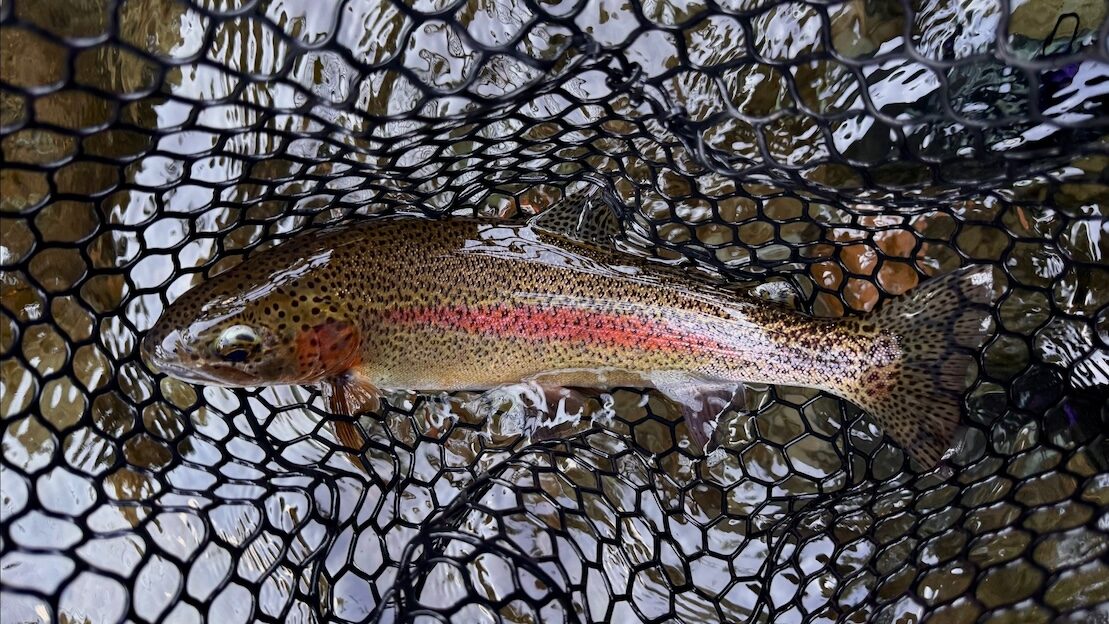
This time of year is when getting off the beaten path really helps. It also is the last hoorah to explore new water before the weather goes south for the fall. Many of our easy to access places have been hammered all summer and the fish are ready for a break. Many of our favorite floats are just getting better and better as things cool off into the fall. If you need any help with gear, flies, or looking for a spot to explore, swing by the shop, we are happy to help.
Keep your eyes peeled for a supplemental post regarding fall hatches in the coming weeks.
Have fun out there,
-Simon

